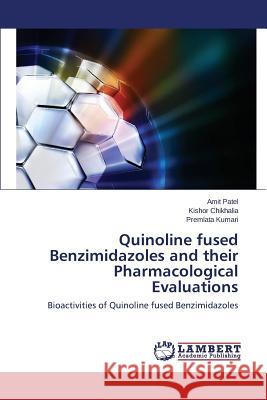Quinoline fused Benzimidazoles and their Pharmacological Evaluations » książka
Quinoline fused Benzimidazoles and their Pharmacological Evaluations
ISBN-13: 9783659614408 / Angielski / Miękka / 2014 / 68 str.
The present book describes the one pot route for quinoline fused azeto 1,2-a]benzimidazole derivatives, involving condensation of o-phenylenediamine with 2-chloroquinoline-3-aldehydes and subsequent Pd-catalyzed cross coupling of resulting benzimidazole N H with 2-choloroquinoline leading to the formation of four-membered azetidine ring as a key step. Synthesized analogs were further tested for antimicrobial, antimycobacterial and anti-prostate cancer activity to observe the variation in biological activity. The bioassay results revealed that the majority of final analogs exhibited potential bio efficacies with the remarkable level of MICs comparable to control drugs. Considering the excellent reaction efficiency, wide substrate scope and very mild reaction conditions, the mentioned synthetic protocols may be attractive routes for the synthesis of other heterocycles. It is worth concluding that insertions of various functional groups are essential to increase the different pharmacological activities of the resultant scaffolds by lowering the MICs in all the cases evaluated. In short, our findings might be beneficial as leads to designing new potential bioactive agents."
The present book describes the one pot route for quinoline fused azeto[1,2-a]benzimidazole derivatives, involving condensation of o-phenylenediamine with 2-chloroquinoline-3-aldehydes and subsequent Pd-catalyzed cross coupling of resulting benzimidazole N‒H with 2-choloroquinoline leading to the formation of four-membered azetidine ring as a key step. Synthesized analogs were further tested for antimicrobial, antimycobacterial and anti-prostate cancer activity to observe the variation in biological activity. The bioassay results revealed that the majority of final analogs exhibited potential bio efficacies with the remarkable level of MICs comparable to control drugs. Considering the excellent reaction efficiency, wide substrate scope and very mild reaction conditions, the mentioned synthetic protocols may be attractive routes for the synthesis of other heterocycles. It is worth concluding that insertions of various functional groups are essential to increase the different pharmacological activities of the resultant scaffolds by lowering the MICs in all the cases evaluated. In short, our findings might be beneficial as leads to designing new potential bioactive agents.











